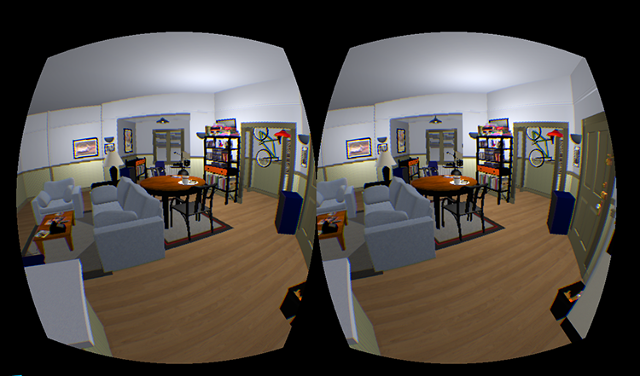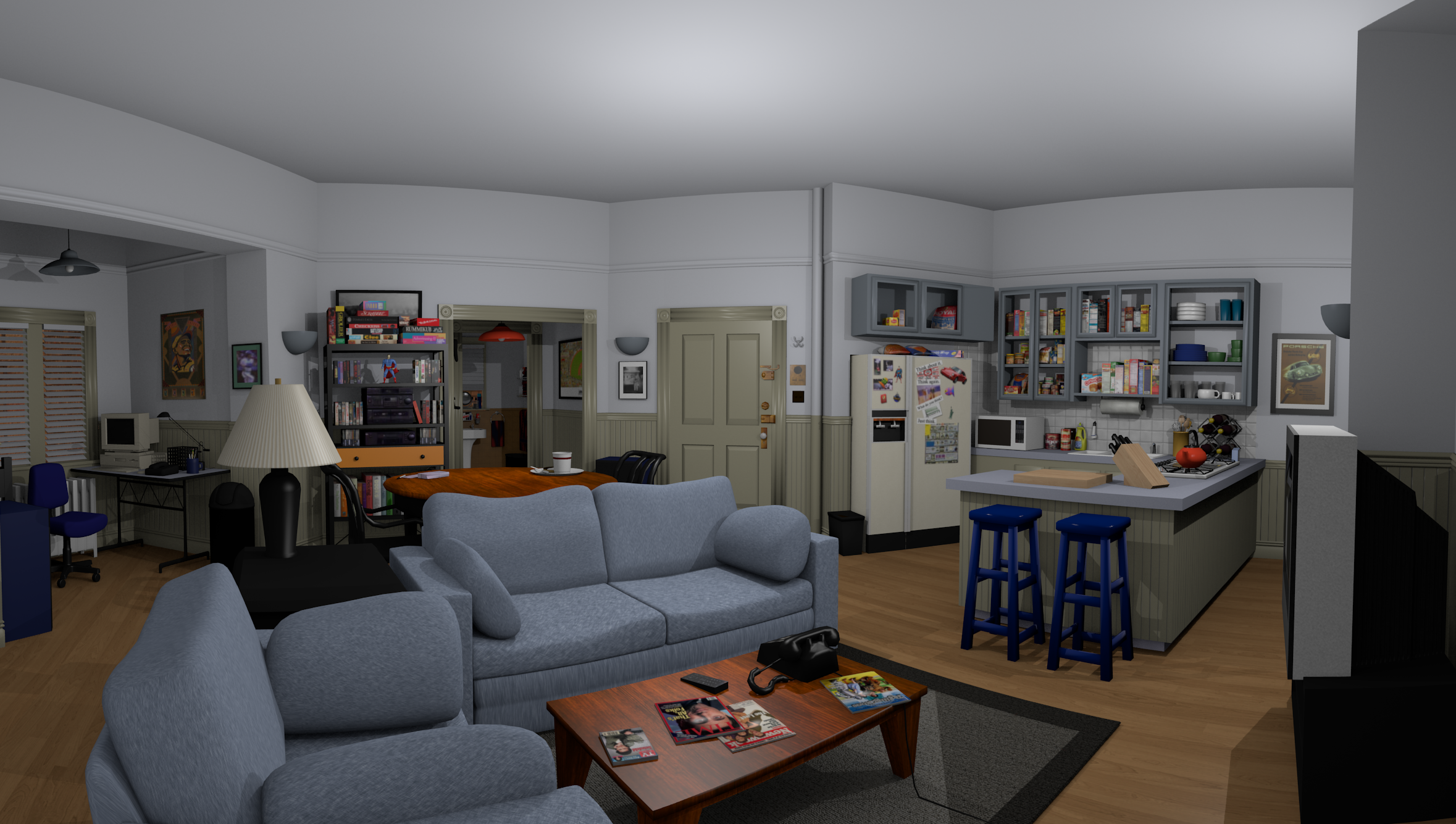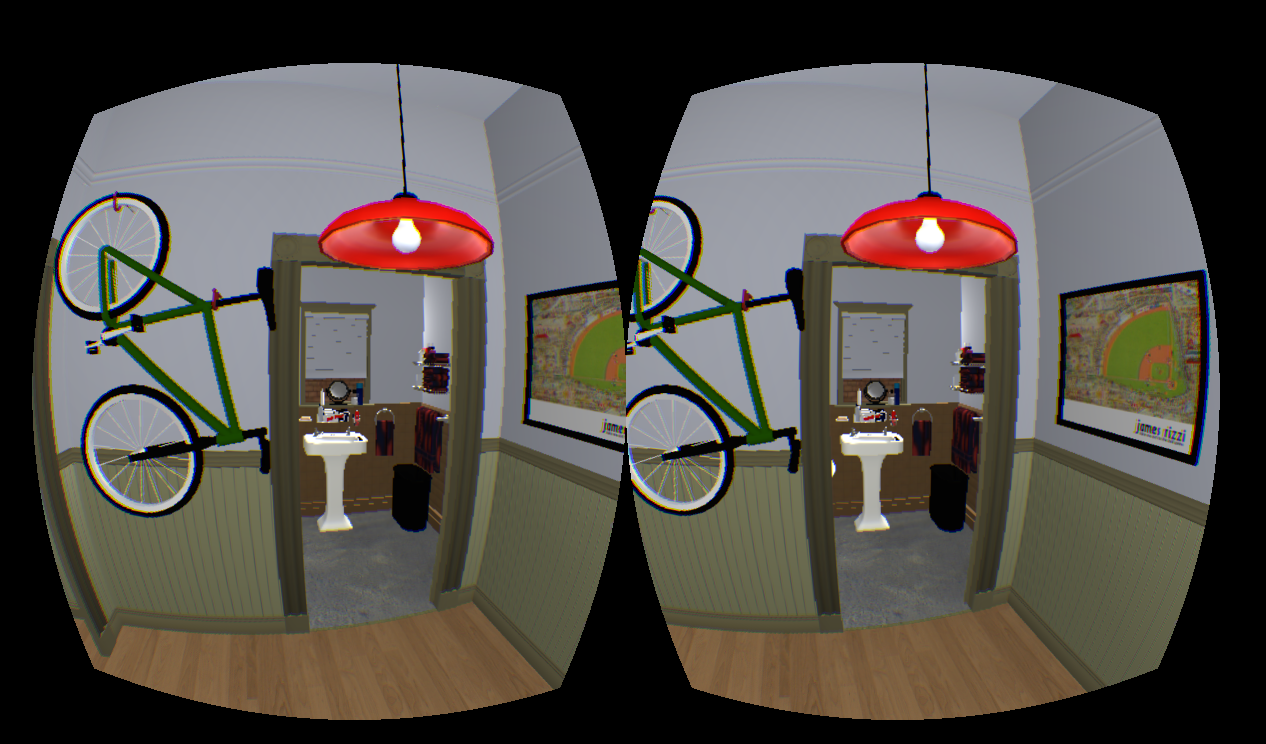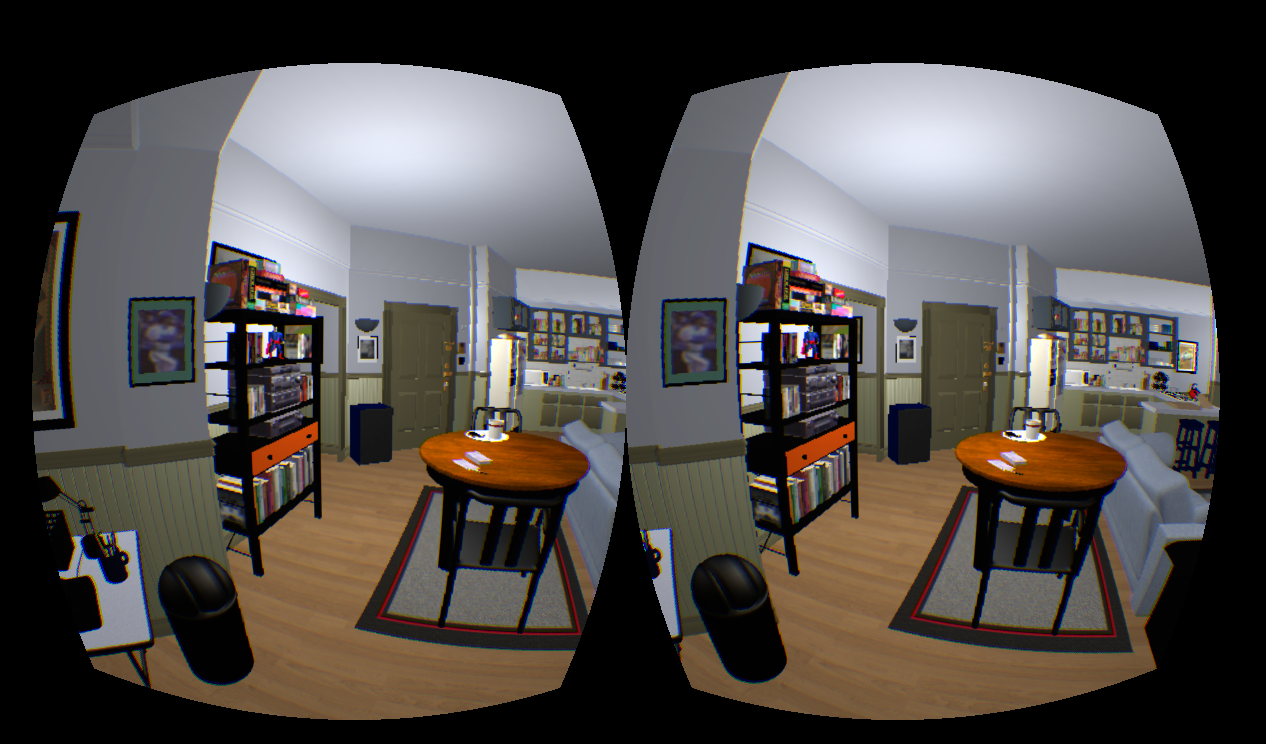After two months of taking screen captures and coding, Web designer Greg Miller has re-created a place intimately familiar to many Americans: Jerry Seinfeld's sitcom apartment.
With the use of the virtual reality headset Oculus Rift, fans of the show can now explore a virtual 3D model of the iconic New York residence.
Users can walk around Seinfeld's apartment, explore all the rooms, and are free to find all 11 episode-specific references that Miller put into his virtual re-creation.
To start, Miller sketched out the entire apartment in a 3D model, he told Fast Company. Then, over two months, he watched Seinfeld and examined screencaps to figure out the minute details of the apartment. He even found 1990s-era labels for Jerry's cereal collection.
Don't own an Oculus Rift? You can still explore the apartment here. "Jerry's Place" is Miller's tribute to fellow Seinfeld fans.
Oculus Rift was designed by Palmer Luckey as a reasonably affordable ($499) device for gaming, but startups like PocketCake are using the technology to bring virtual reality simulations to the architecture and real estate markets.
Luckey told Fast Company that he believes that the future of gaming lies in virtual reality, and thus his headset was created as a way for users to feel as if they are inside the game they're playing. It uses sensors to follow the movement of your head as you look around, cretaing an immersive gaming experience. But it works for exploring your favorite television character's home, too.
Here are screen captures of views of Jerry's Place through the Oculus Rift headset:
Watch this VR model progress video from Greg Miller:
Related Stories
| Nov 10, 2011
Skanska Moss to expand and renovate Greenville-Spartanburg International Airport
The multi-phase terminal improvement program consists of an overall expansion to the airport’s footprint and major renovations to the existing airport terminal.
| Nov 10, 2011
Suffolk Construction awarded MBTA transit facility and streetscape project
The 21,000-sf project will feature construction of a cable-stayed pedestrian bridge over Ocean Avenue, an elevated plaza deck above Wonderland MBTA Station, a central plaza, and an at-grade pedestrian crossing over Revere Beach Boulevard
| Nov 10, 2011
Thornton Tomasetti’s Joseph and Choi to co-chair the Council on Tall Buildings and Urban Habitat’s Outrigger Design Working Group
Design guide will describe in detail the application of outriggers within the lateral load resisting systems of tall buildings, effects on building behavior and recommendations for design.
| Nov 9, 2011
Lincoln Center Pavilion wins national architecture and engineering award
The project team members include owner Lincoln Center for the Performing Arts, New York; design architect and interior designer of the restaurant, Diller Scofidio + Renfro, New York; executive architect, FXFOWLE, New York; and architect and interior designer of the film center, Rockwell Group, New York; structural engineer Arup (AISC Member), New York; and general contractor Turner Construction Company (AISC Member), New York.
| Nov 9, 2011
Sika Sarnafil Roof Recycling Program recognized by Society of Plastics Engineers
Program leads the industry in recovering and recycling roofing membrane into new roofing products.
| Nov 9, 2011
American Standard Brands joins the Hospitality Sustainable Purchasing Consortium
American Standard will collaborate with other organizations to build an industry-wide sustainability performance index.
| Nov 8, 2011
Transforming a landmark coastal resort
Originally built in 1973, the building had received several alterations over the years but the progressive deterioration caused by the harsh salt water environment had never been addressed.
| Nov 8, 2011
WEB EXCLUSIVE: Moisture-related failures in agglomerated floor tiles
Agglomerated tiles offer an appealing appearance similar to natural stone at a lower cost. To achieve successful installations, manufacturers should provide design data for moisture-related dimensional changes, specifiers should require in-situ moisture testing similar to those used for other flooring materials, and the industry should develop standards for fabrication and installation of agglomerated tiles.


















